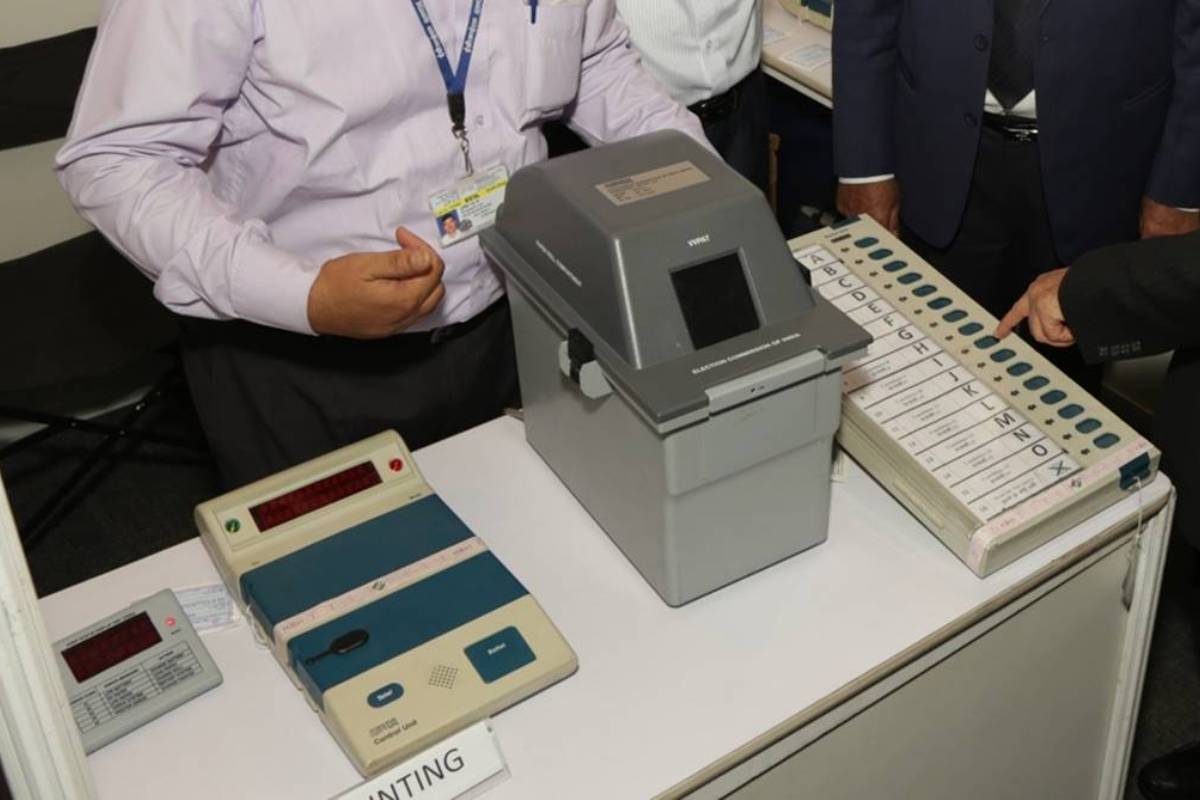The Lok Sabha elections 2019 will be held in seven phases from 11 April to 19 May, the Election Commission of India announced on Sunday. Counting will be held on 23 May.
At a press conference in New Delhi’s Vigyan Bhawan, Chief Election Commissioner Sunil Arora said while elections in the majority of the states across the country would be held in a single phase, some states would witness elections in seven phases.
There is no state where elections will be held in six phases. Jammu & Kashmir will see a five-phase polls. No decision has been taken yet on J&K Assembly elections.
The general elections are being held for 543 seats of the 17th Lok Sabha.
The CEC said the number of voters had risen to 90 crore from 81 crore in 2014.
“The Model Code of Conduct (MCC) comes into effect from today itself in the entire country. Any violation will be dealt with in the strictest manner,” he said.
2019 Lok Sabha polls: Complete schedule
Following are the dates of polling for each of the seven phases and the number of constituencies which will go to polls:
Phase 1 – 11 April
To be held in 91 constituencies in 20 states
Phase 2 – 18 April
To be held in 97 constituencies in 13 states
Phase 3 – 23 April
To be held in 116 constituencies in 14 states
Phase 4 – 29 April
To be held in 71 constituencies in 9 states
Phase 5 – 6 May
To be held in 51 constituencies in 7 states
Phase 6 – 12 May
To be held in 59 constituencies in 7 states
Phase 7 – 19 May
To be held in 59 constituencies in 8 states
Number of phases per state:
Single phase: Andhra Pradesh, Arunachal Pradesh, Goa, Gujarat, Haryana, Himachal Pradesh, Kerala, Meghalaya, Mizoram, Nagaland, Punjab, Sikkim, Telangana, Tamil Nadu, Uttarakhand, Andaman and Nicobar, Dadar and Nagar Haveli, Daman and Diu, Chandigarh.
Two phases: Karnataka, Manipur, Rajasthan, Tripura
Three phases: Assam, Chhattisgarh
Four Phases: Jharkhand, Madhya Pradesh, Maharashtra, Odisha
Five Phases: J-K
Six Phases: No states
Seven phases: Bihar, Uttar Pradesh, West Bengal
Number of seats per state where elections will be held in each phase:
Phase 1 – 11 April:
Andhra Pradesh 25 seats, Arunachal Pradesh 2 seats, Assam 5 seats, Bihar 4 seats, Chhattisgarh 1 seat, J-K 2 seats, Maharashtra 7 seats, Manipur 1 seat, Meghalaya 2 seats, Mizoram 1 seat, Nagaland 1 seat, Odisha 4 seats, Sikkim 1 seat, Telangana 17 seats, Tripura 1 seat, UP 8 seats, Uttarakhand 5 seats, WB 2 seats, AN 1 seat, Lakshwadeep 1 seat
Total = 91 seats
Phase 2 – 18 April:
Assam 5 seats, Bihar 5 seats, Chhattisgarh 3 seats, J-K 2 seats, Karnataka 14 seats, Maharashtra 10 seats, Manipur 1 seat, Odisha 5 seats, Tamil Nadu 39 seats, Tripura 1 seat, UP 8 seats, West Bengal 3 seats, Puducherry 1 seat
Total = 97 seats
Phase 3 – 23 April:
Assam 4 seats, Bihar 5 seats, Chhattisgarh 7 seats, Gujarat 26 seats, Goa 2 seats, J-K 1 seat, Karnataka 14 seats, Kerala 20 seats, Maharashtra 14 seats, Odisha 6 seats, Uttar Pradesh 10 seats, West Bengal 5 seats, Dadar & Nagar Haveli 1 seat, Daman and Diu 1 seat
Total = 116 seats
Phase 4 – 29 April:
Bihar 5 seats, J-K 1, Jharkhand 3 seats, Madhya Pradesh 6 seats, Maharashtra 17 seats, Odisha 6 seats, Rajasthan 13 seats, Uttar Pradesh 13 seats, West Bengal 8 seats
Total = 71 seats
Phase 5 – 6 May:
Bihar 5 seats, J-K 2 seats, Jharkhand 4 seats, MP 7 seats, Rajasthan 12 seats, Uttar Pradesh 14 seats, West Bengal 7 seats
Total = 51 seats
Phase 6 – 12 May:
Bihar 8 seats, Haryana 10 seats, Jharkhand 4 seats, Madhya Pradesh 8 seats, Uttar Pradesh 14 seats, West Bengal 8 seats, Delhi 7 seats
Total = 59 seats
Phase 7 – 19 May:
Bihar 8 seats, Jharkhand 3 seats, Madhya Pradesh 8 seats, Punjab 13 seats, West Bengal 9 seats, Uttar Pradesh 13 seats, Himachal Pradesh 4 seats, Chandigarh 1 seat
Total = 59 seats
There will be approximately 10 lakh polling stations in this Lok Sabha elections as compared to 9 lakh polling stations in 2014.
This Lok Sabha election will also see the use of VVPATS in all polling stations and paper trail will be available in all polling stations.
Addressing reporters, CEC Sunil Arora said, “We had a discussion with the chief ministers of states and all the Union Territories. We also held talks with several key departments to ensure smooth conduction of polls.”
he said that social media expert is also going to be part of Media Certification and Monitoring Committee and candidates will have to furnish details of their social media accounts.
“All expenditure on social media campaigning will be a part of election expenditure account,” the CEC said.
ALSO READ: How does VVPAT machine work when you cast vote












